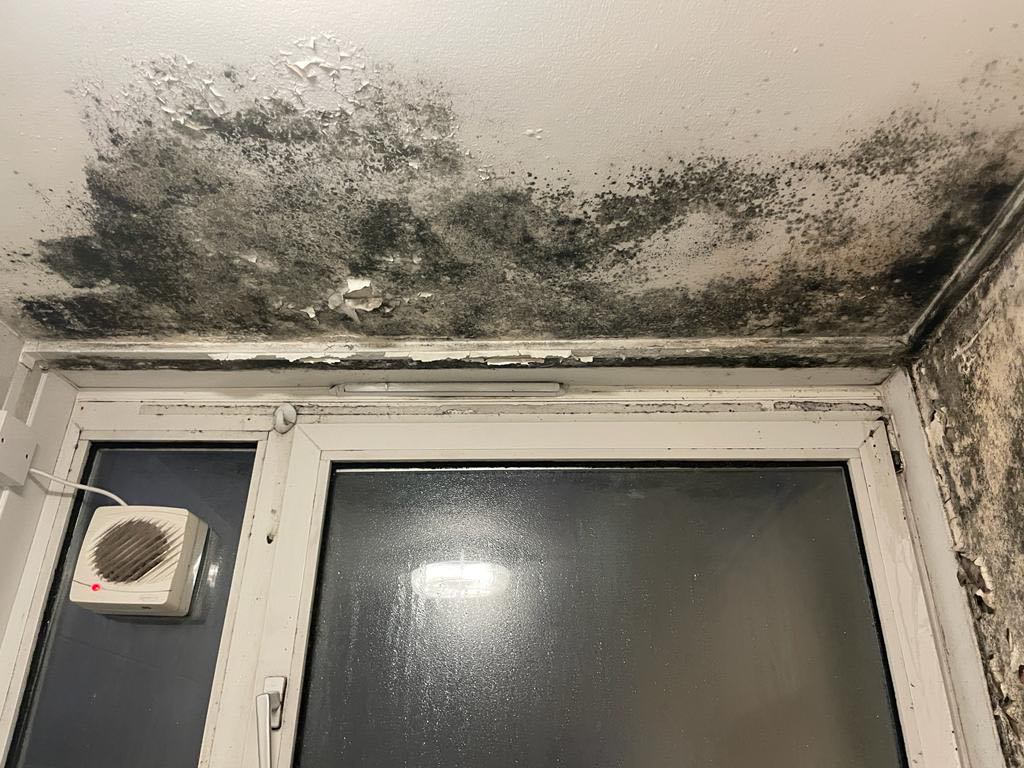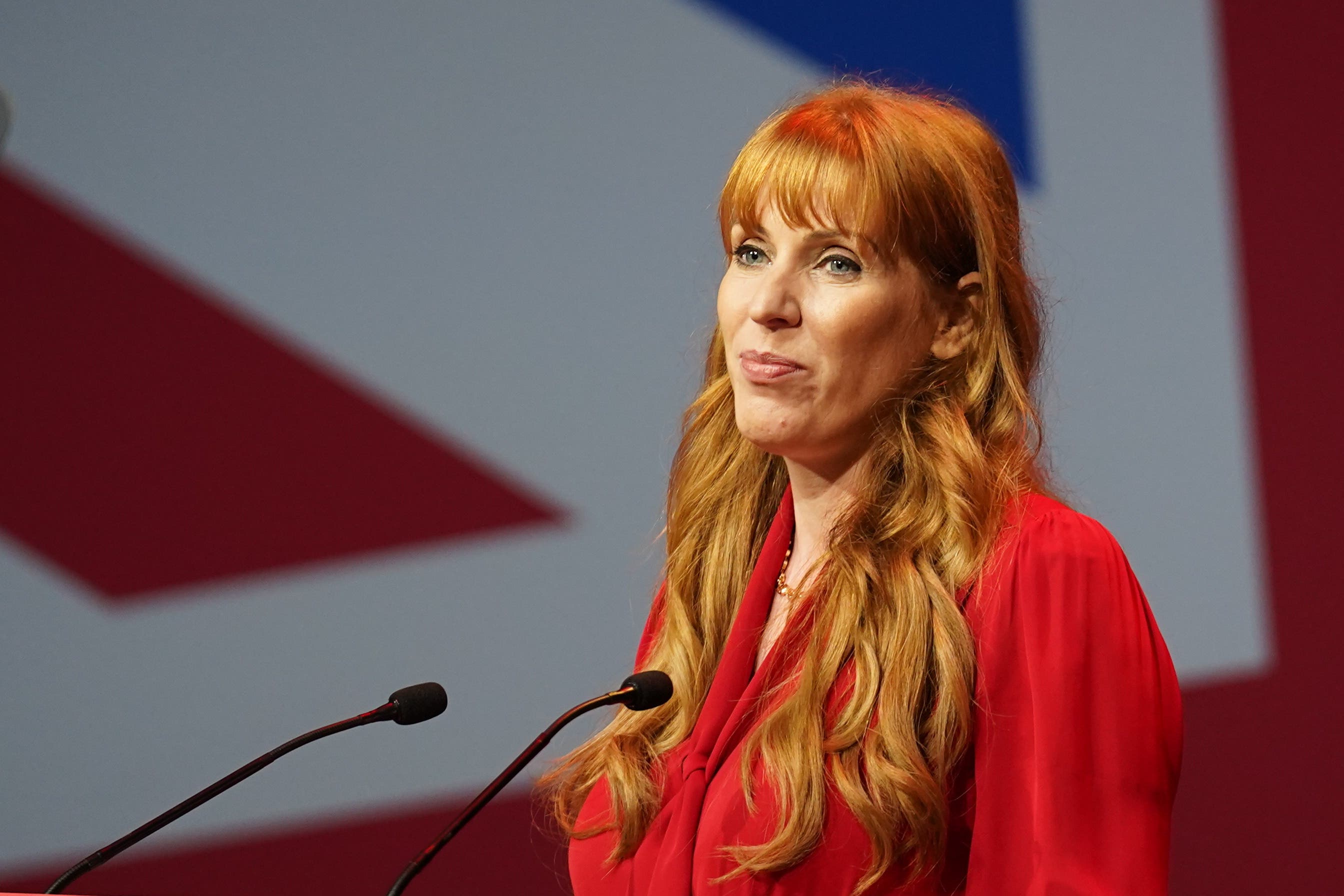Revealed: Millions of children at risk from killer mould as families struggle to heat homes
Exclusive: Fuel poverty campaigners demand action before another child dies – as 3.4m families live in ‘Victorian’ and ‘incredibly dangerous’ conditions
Millions of young children are being exposed to potentially life-threatening mould as a growing number of Britons in the grip of the energy crisis struggle to heat their homes this winter.
Shock new figures shared with The Independent reveal that one in three young families in the UK are stuck in homes with a recurring mould problem.
Campaigners called on Rishi Sunak to address the “Victorian” and “incredibly dangerous” conditions – demanding an emergency energy tariff to help Britons in damp and cold homes.
Some 3.4 million (38 per cent) of people in the UK with children under the age of six are exposed to mould, either frequently or occasionally, new polling shows. And the Opinium survey found that 850,000 of those parents are living with a serious, habitual mould problem at home – amounting to 10 per cent of all parents with children under six.
Have you been affected by this? Email athena.stavrou@independent.co.uk
It comes as a new estimate reveals that another 200,000 families will be plunged into fuel poverty this January when energy prices rise yet again – taking the total number struggling to pay their bills to 6.8 million.
The latest findings on housing conditions follow the death of toddler Awaab Ishak, which was found to have been caused by “extensive” mould in his family’s flat in Rochdale. It sparked outrage about the dire situation faced by the most vulnerable.

Both damp and mould are considered category 1 health hazards – those with the potential to cause death or loss of limb – under official government guidance.
Labour’s deputy leader Angela Rayner said that “too many children are living in damp, cold and mouldy homes”, and called on the Tory government to retrofit more properties and extend protections for renters.
The End Fuel Poverty Coalition of charities – which commissioned the new survey as part of the Warm This Winter campaign – said the “chilling findings” on mould demand urgent action from Mr Sunak and chancellor Jeremy Hunt.
Simon Francis, the coalition’s coordinator, said it exposed the government’s failure to invest in solutions to fuel poverty – such as proper insulation and measures to mitigate the impact of soaring energy bills.
“We’re really worried about those frequently seeing mould – that’s incredibly dangerous living conditions,” the campaigner said. “It underlines why we need further urgent action from the government to step in and help households stay warm this winter.”

Condensation and damp in homes can lead to mould growth, which can cause allergic-type reactions, worsen respiratory illnesses and increase the risk of heart disease and cardiac events.
Mother of three Terri Harrigan told The Independent the mould in her flat in east London is getting significantly worse because she cannot afford to turn on her heating.
The NHS receptionist’s youngest daughter, Ariella, 3, has developed asthma due to the mould and needs to be in a warm environment to keep her chest healthy.
Ms Harrigan said it is too cold to open her windows to allow air to circulate – but that she can’t afford to put on the heating each day because gas and electricity bills have skyrocketed. She explained: “Not being able to put on the heating is making the mould come back worse. We can’t open the windows because it’s too cold, so condensation forms and it gets damp.”
Ms Harrigan added: “It upsets me a lot. I don’t want my daughter to be sick. My three-year-old daughter shouldn’t have to live like that. Last year we got some government help but now we don’t get that. It’s completely delusional that they think people don’t need it any more.”

Figures revealed by The Independent in August show that such problems are getting worse. The number of complaints to the Housing Ombudsman Service about health hazards – mould, damp and leaks – shot up by 35 per cent in the last year.
John McGowan, head of the Social Workers Union, said social workers on the front line were seeing families struggling in living conditions “more like Victorian novels than modern-day Britain”.
He added: “It’s clear that households – especially those most at risk from the health complications of living in cold, damp homes – need more support.”
Ms Rayner said the private rented sector still has “widespread problems with debilitating damp and mould driven by poor energy efficiency” – promising that Labour’s warm homes plan would “upgrade every home that needs it”.
Although the death of Awaab saw the introduction of “Awaab’s Law” – which requires social housing landlords to ensure their properties are free of hazardous substances – Labour has accused the government of failing to control landlords in the “Wild West” private sector.
Urging levelling-up secretary Michael Gove to toughen up the Renters Reform Bill, Ms Rayner said: “In the face of such a pervasive problem, Labour is urging the government to extend these protections to private renters and ensure hazards are properly investigated and addressed.”

The End Fuel Poverty Coalition, whose members include Save the Children and the Joseph Rowntree Foundation, has warned of a “humanitarian crisis” if a growing number of families are forced to turn off their heating during winter.
Many parents have turned to food banks, with some facing the terrible choice between heating and eating. But experts warn that the struggle is set to get even worse this winter.
In new figures shared with The Independent, the coalition estimates that the number of households in fuel poverty will go up from 6.6 million to 6.8 million from January.
The coalition also estimates that 1,180,000 families with children under the age of five are in fuel poverty – but this will grow to 1,220,000 from January when regulator Ofgem again raises the cap on energy bills.
Mr Hunt failed to offer any support, even for the poorest households, in his autumn statement. The government’s energy price guarantee discount – which saved the typical household an average of £1,000 a year on their bills – was stopped in June.
“All parents got from the chancellor in the autumn statement was the cold shoulder,” said Mr Francis. “The real-life impacts of decisions made in Westminster are now clear to see.”
Campaigners are calling for an emergency energy tariff which would see monthly gas and electricity bills for vulnerable groups on benefits cut by almost 50 per cent.
They are also calling on the chancellor to introduce a “help to repay” scheme that would offer some debt relief to those facing unaffordable arrears on energy bills.
Petitions with hundreds of thousands of signatures – calling for more action to help end the crisis in cold, damp homes – will be handed into No 10 this week. As part of the Warm This Winter campaign, organisations including Debt Justice, 38 Degrees and Fuel Poverty Action will be joined at Downing Street by people suffering with fuel poverty.
A spokesperson for the Department for Levelling Up, Housing and Communities said: “Everyone deserves a home that is safe, warm and decent, but far too many live in conditions that fall well below what is acceptable.
“Our landmark Renters Reform Bill will apply a decent homes standard to the private rented sector for the first time, helping to meet the target of reducing non-decent rented homes by 50 per cent by 2030.”
Join our commenting forum
Join thought-provoking conversations, follow other Independent readers and see their replies
Comments
Bookmark popover
Removed from bookmarks